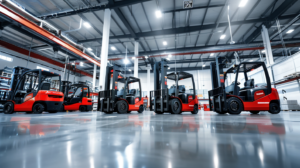Whether you’re outfitting a warehouse, logistics hub or manufacturing floor, diving into the world of Chinese electric forklifts can feel a little overwhelming—there are so many models, specs, and price points to consider. But with the right guide, you’ll be walking through the process with clarity and confidence. In this buyer’s guide, we’ll cover what to look for in specs, how pricing in 2025 is shaping up, what the key advantages (and caveats) are of Chinese-made units, and highlight some of the best models (without turning this into a sales pitch!). One brand that’s worth a mention in your shortlist is Nicosail—we’ll touch on how they fit into the landscape—but the goal is an objective overview so you can make the right decision for your business.

1. Why consider a Chinese electric forklift in 2025?
Chinese forklift manufacturers have made big strides in quality, variety and pricing. According to one sourcing guide:
- Chinese electric-forklift brands are increasingly delivering cost-effective solutions without sacrificing essential quality.
- The global market sees China as a major production hub for electric forklifts—many models offer good value for money.
Advantages:
- Competitive pricing compared to many Western brands.
- Wide range of capacities and battery technologies (lead-acid, lithium etc).
- Increasing global focus on electric forklifts (zero emissions, indoor-friendly).
- Plenty of factory options and export-friendly models.
But a few cautions:
- After-sales service, parts availability and local dealer support may vary. For example one reddit user noted: “Personally, I’d go with a dealer in your area so you have actual support for the lifts. They WILL need maintenance, it’s not an If.”
- Some models may have less documentation, fewer certified parts.
- Export-logistics, compliance (CE, ISO, etc) and training remain factors to check.
Bottom line: A Chinese-electric forklift can be a very smart choice—but only if you pick wisely and check the specs, support and manufacturer credibility.
2. Key specs you absolutely must check
When comparing electric forklifts, especially those coming from Chinese factories, here’s a list of specs you should never skip. These are the features that will make or break your operation.
2.1 Load capacity & lift height
How much your forklift can lift (in tons or kilos) and how high it can lift matters. Chinese models referenced cover a broad range—from smaller indoor units to heavy outdoor machines.
Make sure the capacity meets your typical load, plus a margin for surprises.
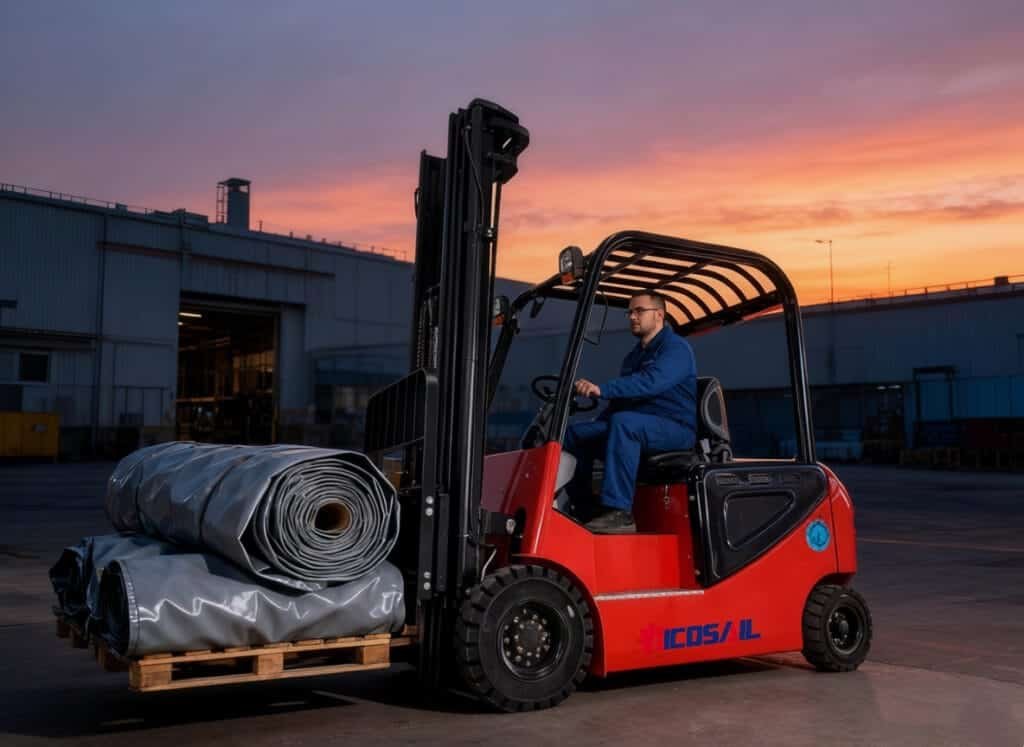
2.2 Battery type and battery life
Battery technology is huge: lead-acid vs lithium-ion vs newer types. A modern electric forklift should have good battery life, decent charge-cycle durability, and manageable maintenance. For Chinese models, many now offer lithium-ion options.
Also check: how many hours per charge? Charging time? Maintenance requirements?
2.3 Drive system, motor type & electronics
Look for AC motors, regenerative braking, good controller electronics. The smoother and more efficient the drive system, the more productivity and lower running costs. Chinese guides mention that such features are increasingly offered.
2.4 Manufacturer certifications & build quality
Does the manufacturer provide ISO/CE certification? Are parts traceable? Is there proper documentation? One sourcing guide highlights the importance of certifications and quality tracking for Chinese suppliers.
2.5 Service support, parts availability, warranty
Even the best forklift will need maintenance. Check: is there a local service partner? Spare parts supply? How long is the warranty? Are manuals in your language? What about support for the battery system? If these are weak, you may end up paying more down the road.
2.6 Total cost of ownership (TCO)
Don’t just look at the purchase price. Also consider: battery replacement cost, electricity/energy cost, maintenance, downtime cost, resale value. Some Chinese units may offer lower purchase price but may have higher hidden costs if support is weak.
2.7 Operating environment and suitability
Are you using it indoors (quiet/zero emissions) or outdoors (rough terrain)? Narrow aisles or wide open yard? Cold storage or hot environment? The specs should match your context. Chinese electric forklift guides emphasise matching forklift type to your working conditions.

3. Chinese electric forklift price ranges in 2025
Let’s talk numbers. While exact prices fluctuate based on capacity, battery tech, region, shipping, etc., here are ballpark figures for Chinese electric forklifts in 2025.
- Smaller indoor electric forklifts (approx 1.5-2.5 ton capacity) may start in the US$12,000-20,000 range, depending on specifications, battery type and quantity shipped.
- Medium capacity models (3-5 ton) could be in the US$20,000-35,000+ range. For example one global guide lists this ballpark for Chinese OEM units.
- Larger/heavy duty units (5-10 ton +) with advanced lithium batteries, longer mast heights, heavy duty outdoor use—these could easily climb to US$40,000-60,000+, depending on options.
Important notes:
- These are FOB (factory) or export base figures; shipping, import duties, local modifications can add.
- Battery type matters: lithium options cost more up front but can save on lifetime cost.
- Don’t just chase the lowest price—ensure specs and support are aligned with your needs.
4. Best Chinese electric forklift brands & what to watch
Here’s a quick overview of some reputable Chinese electric forklift brands and how to use them as benchmarks. Again: this isn’t a full ranking, just a helpful list to orient your search.
- HELI – One of China’s largest forklift manufacturers; known for reliability and large capacity models.
- Hangcha – Offers a wide range of electric forklift capacities (0.75-25 ton) and has strong export presence.
- BYD – Known globally for electric vehicles; their forklift range brings good battery tech experience.
- Noblelift – Offers mid-range electric forklift models with good battery options and global footprint.
- Nicosail – While less referenced in the major global lists, Nicosail is emerging and worth a look if you’re sourcing Chinese electric forklifts—just check their specs, support, parts and export readiness. (Mentioned here as part of your shortlist only.)
When choosing among brands:
- Compare battery technology.
- Check whether the brand has local or regional service/agent in your market.
- Ask for test units or at least full technical sheets.
- Ensure compliance with your country’s import/usage regulations.
5. How to shortlist models: matching your business needs
Let’s get practical: step through how you should build your shortlist.
Step 5.1 Define your load & lift requirements
- Typical load weight? Peak load?
- Lift height/rack height?
- Aisle width? Outdoor vs indoor use?
- Operating hours per day?
Step 5.2 Define battery/energy requirements
- How many hours per shift? Will you run multiple shifts?
- Do you need quick-charging or battery swapping?
- Environment: hot/cold, humidity, indoor/outdoor ventilation.
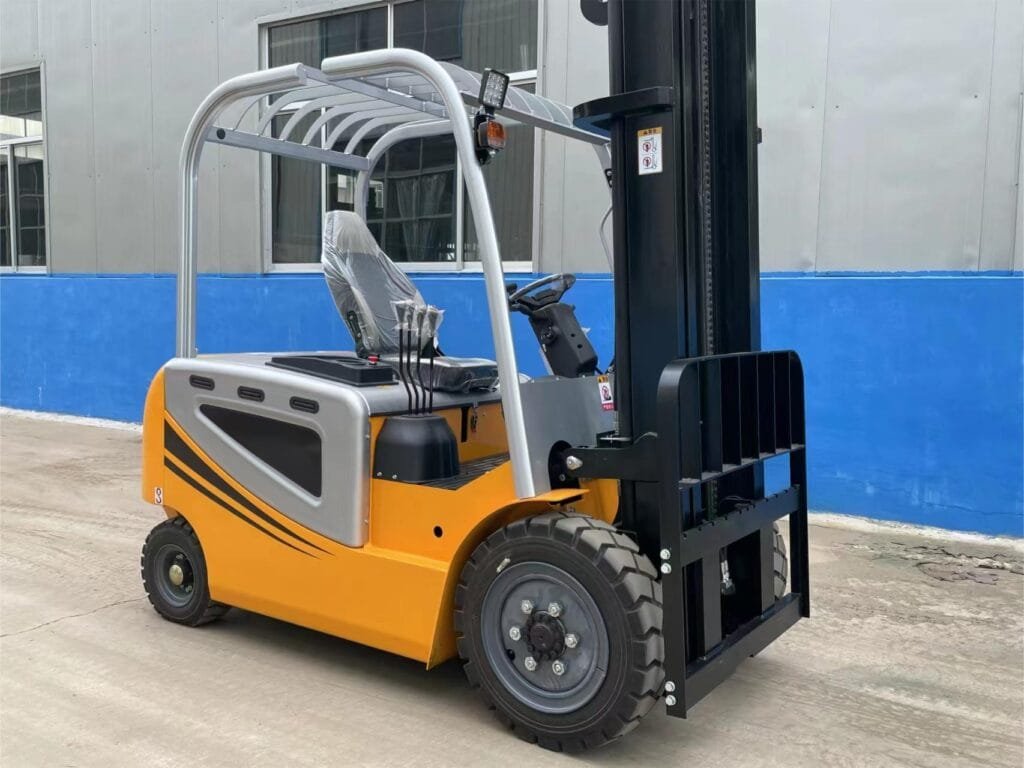
Step 5.3 Define environment & surface conditions
- Smooth concrete floor vs rough yard.
- Indoors vs outdoors.
- Narrow aisles or wide.
- Rack heights, stacking frequency.
Step 5.4 Define maintenance & support capability
- Does your region have certified dealerships for the brand?
- Can parts (especially the battery) be sourced locally?
- What is the warranty period?
- What is the maintenance cycle? Is training provided?
Step 5.5 Compare total cost of ownership (TCO)
- Purchase cost.
- Energy cost (electricity).
- Battery life & replacement cost.
- Downtime risk.
- Resale value (if any).
- Safety features/legal compliance.
Step 5.6 Shortlist 2-3 brands/models and get quotes
- Ask for full spec sheet: capacity, mast height, battery type/hours, drive motor, controller electronics, tyre type.
- Ask for export terms (if imported).
- Ask for delivery time, shipping cost, customs/import duties.
- Ask for service/support plan.
Using this step-by-step will help you avoid surprise costs and ensure you pick a machine aligned with your operational needs.
6. Example model types & configurations to consider
Here are example categories of electric forklifts emerging from China in 2025, and what you might expect.
Category A: Compact indoor electric forklift (1.5–2.5 ton)
Ideal for warehouses with moderate traffic, indoor use, lower ceilings. Typical specs might include lead-acid battery or basic lithium option, standard mast height (3-4 m). Lower purchase cost but check battery cycle life.
Category B: Standard warehouse medium duty (3-5 ton)
This is one of the most popular use cases: general warehousing, logistics centers. Here you want a good battery (preferably lithium if budget allows), AC drive motor, decent lift height (4-6 m), maybe side-shift forks, comfortable operator cabin.
Category C: Heavy duty / outdoor / high lift (5-10 ton +)
For large manufacturing, yard/port use, heavier loads, maybe rough terrain. You’ll want strong battery, robust frame, higher mast, outdoor tyres, maybe weatherproofing. These cost more up front but are necessary for demanding settings.
When reviewing Chinese-made units in these categories, make sure you ask for battery type, cycle life, warranty, drive motor rating, and after-sales service availability.
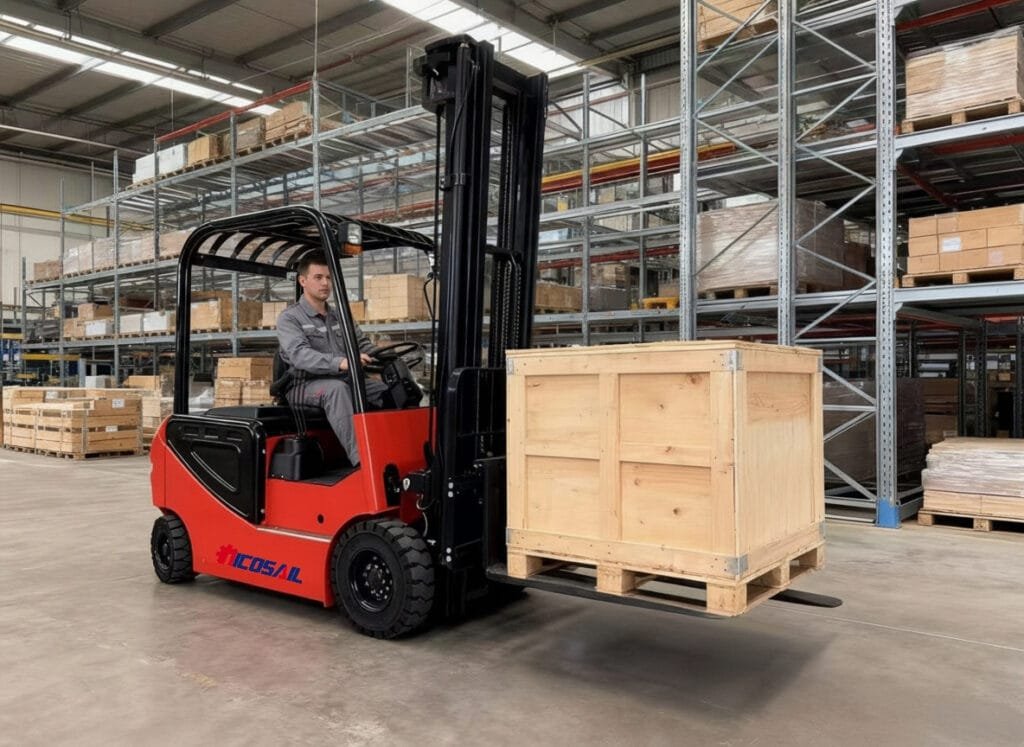
7. Maintenance & lifecycle: making your investment last
Getting the machine is one thing—but keeping it running efficiently is another. Here are key points:
- Battery maintenance: Especially if lead-acid battery is used, regular checks, water levels, charging regime matter. Lithium-ion requires proper thermal management, correct charging intervals.
- Drive train & electronics: AC motors tend to have longer life and less maintenance than older DC motors. Make sure the controller electronics are from a quality provider.
- Tyres & hydraulics: Tyres wear depending on floor/usage; hydraulics should be inspected for leaks, mast components for wear.
- Operator training: A good operator extends the life of your forklift. Avoid harsh starts/stops, overloads, improper stacking.
- Spare parts availability: For Chinese models, especially imported ones, ensure you have spare parts locally or a reliable supply chain; battery replacements and controller modules are costly if delayed.
- Record keeping & preventive maintenance: Logging hours, loads, battery cycles helps you plan replacements and prevent unexpected downtime.
- Resale and upgrade path: Even if you don’t plan to resell, knowing how long your machine will remain productive is important—some buyers aim for 10,000 to 20,000 operating hours depending on spec.
8. How to import and evaluate a Chinese electric forklift safely
If you’re sourcing from China (or considering), here are practical tips:
- Factory visit or audit: If possible, visit or send someone to inspect the manufacturer’s facility. Check production, QC, test logs.
- Ask for certifications: CE, ISO 9001, safety standards for your region.
- Request sample/test machines: Can you test locally? Or get detailed photos/videos of machine in operation.
- Check shipping & import duties: Freight, customs, import tax, local modifications—add these into your cost.
- Local compliance: Ensure machine complies with local safety and emissions rules (for the battery, electrical system, noise, signage).
- After-sales plan: Ensure there is a distributor, or at least a logistic plan for parts shipping & service.
- Trial run and acceptance: Once machine arrives, run tests, load tests, battery performance, measure actual specs vs quoted.
- Training & documentation: Ensure operator manual, maintenance manual, spare parts list are included (ideally in your language).
By following these steps you reduce risk significantly when importing a Chinese electric forklift.
9. Where does the brand Nicosail fit in?
As mentioned earlier, while many of the big names (HELI, Hangcha, BYD etc) dominate the global market, the brand Nicosail is worth a spot on your radar when you’re sourcing Chinese electric forklifts. Here’s how to consider them objectively:
- If Nicosail offers good specs (battery tech, drive system, after-sales support) and competitive pricing, they may offer strong value.
- But you should still treat them like any other supplier: verify their credentials, check their export experience, ask for references, see parts availability in your region.
- By including Nicosail in your short-list of 2-3 brands, you ensure you’re not just picking the highest cost brand, and you give yourself options.
- Don’t let the mention of the brand distract you from the core evaluation: specs, service, total cost.
In short: Nicosail could be a strong contender—but bring it into your comparison framework, not as the only choice.
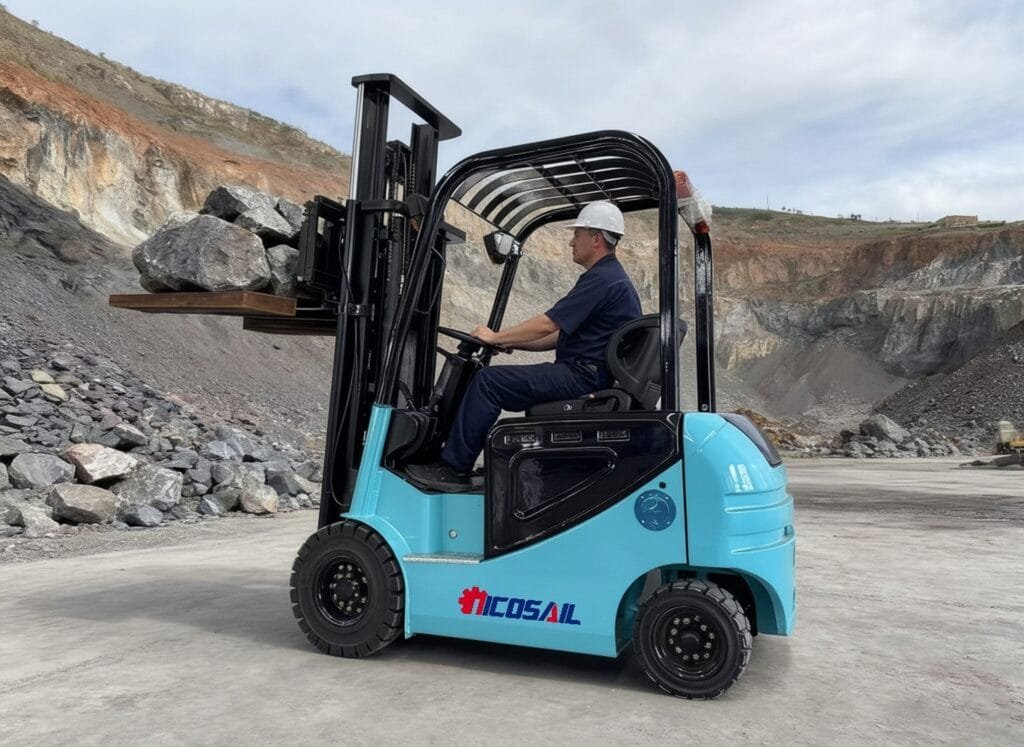
10. Case study-style: what to ask your supplier (checklist)
Here’s a handy table you can use to compare supplier responses:
| Question | Why it matters |
|---|---|
| What is the battery type (lead-acid vs lithium) and expected cycle life? | Battery is one of the highest cost components. |
| What is the rated load capacity and lift height for the model? | Ensures machine fits your real-world usage. |
| What is the drive motor type and control system? | Impacts performance, energy efficiency, maintenance. |
| What certifications do you hold (CE, ISO, etc)? | Ensures compliance and quality control. |
| What warranty is provided (battery, drive system, overall machine)? | Reduces risk of unexpected cost. |
| Do you have local service/parts in my country or region? | Maintenance & downtime risk. |
| What is lead time, shipping cost, import duties etc? | Adds to total purchase cost and planning. |
| What is the expected total cost of ownership (TCO) over 5 years? | Helps justify ROI. |
| What kind of operator training and documentation is provided? | Affects safety, usage and lifespan. |
| Can you provide references or photos/videos of similar machines in operation? | Helps verify capability and real-world performance. |
11. Top model types to keep an eye on in 2025
Here are some real-life model types (from Chinese brands) that illustrate the kind of choices you’ll see:
- A 3.5 ton electric forklift with AC drive motor, lithium battery, standard mast – good for general warehouse.
- A 2.5 ton indoor narrow-aisle electric forklift with compact footprint and lithium battery – ideal for e-commerce/fulfillment centre.
- A 5-ton plus heavy duty outdoor electric forklift with large battery, higher lift height, rugged tyres – for manufacturing/port yards.
When you compare, make sure you’re comparing “apples to apples” in terms of battery tech, motor, usage environment, brand support.
12. Spec trends & what’s changing in 2025
What’s new or evolving in the Chinese electric forklift space in 2025?
- Lithium-ion battery options are becoming more common and cost-competitive. This means less downtime, faster charging, longer life.
- Better electronics, AC motors, improved operator ergonomics and safety features are increasingly available in Chinese models.
- Improved global compliance: more Chinese manufacturers are getting certifications, improving export readiness.
- Greater focus on total cost of ownership (TCO) and lifecycle cost, not just purchase price.
- Remote/IoT connectivity: some electric forklifts now have telematics, battery‐monitoring, operator usage tracking.
- Sustainability and zero-emission push means electric forklifts are increasingly preferred over internal combustion in indoor settings.
So if you’re buying now, you’ll want to pick a machine that not only fits today but is future-proof for next five years.
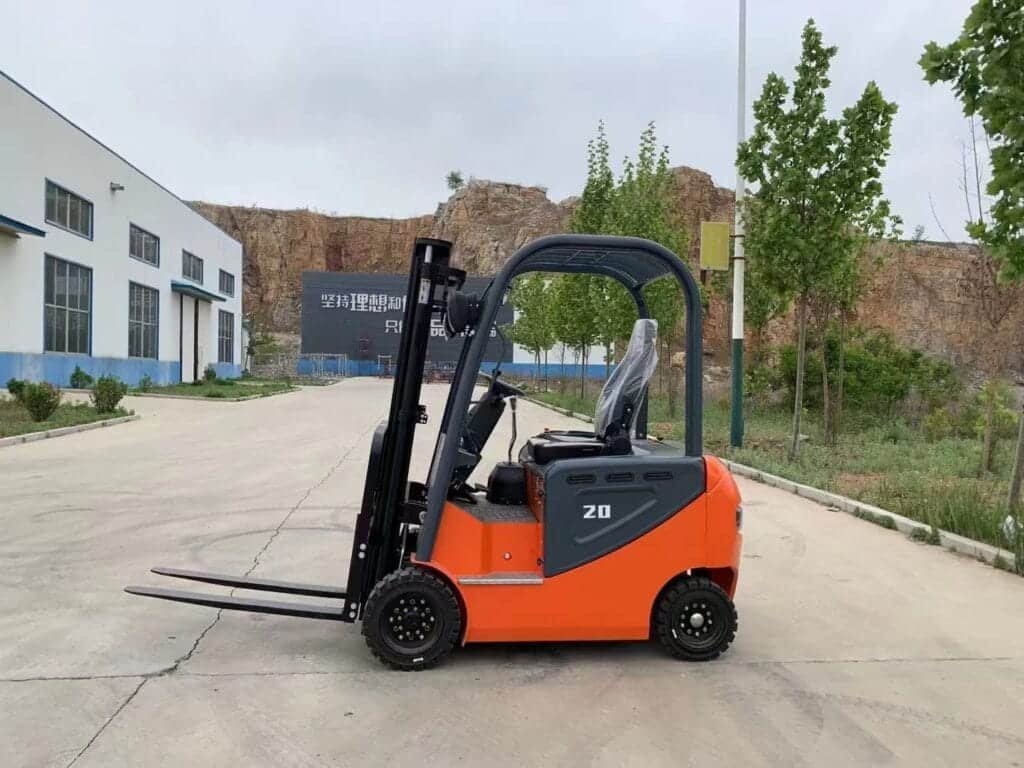
13. Common mistakes to avoid
As friendly advice, here are the pitfalls many buyers trip over when sourcing Chinese electric forklifts:
- Choosing solely on lowest purchase price and ignoring specs/support.
- Not factoring in battery replacement/maintenance costs.
- Ignoring local parts/service availability (especially for imports).
- Not verifying certifications or testing the machine in real-world conditions.
- Overlooking suitability for your environment (e.g., outdoor use, narrow aisles, cold storage).
- Neglecting operator training or maintenance planning—leading to premature wear/failure.
By being aware of these, you’ll avoid surprises and get much better value.
14. Final step: making your decision
Once you’ve done the homework:
- Narrow your shortlist to 1-2 models/brands including perhaps one of the major recognized brands and a promising contender like Nicosail.
- Hold a demo or at least a visit/test if possible.
- Get full cost breakdown (purchase + shipping/import + setup + training + maintenance).
- Plan for installation/training/maintenance.
- Set key performance indicators: battery life, downtime, operator comfort, ease of maintenance.
- Monitor for the first 6-12 months and keep records—it will help justify future purchases or replacements.
15. FAQs (Frequently Asked Questions)
Here are six common questions buyers ask, along with straightforward answers:
Q1: Are Chinese electric forklifts reliable?
A: Yes—many Chinese manufacturers are now producing high-quality electric forklifts. The key is selecting one with good specs, proven exporter credentials and local support. See guides about sourcing Chinese forklifts.
Q2: How much should I budget for a 3-ton Chinese electric forklift in 2025?
A: As a rough guide, you might expect somewhere around US$20,000-30,000 depending on battery type, features, shipping/import and support.
Q3: Lithium battery or lead-acid battery—which is better?
A: Lithium batteries cost more up front but tend to offer longer life, faster charging, less maintenance and lower total cost of ownership. Lead-acid is cheaper initially but may require more upkeep and replacements.
Q4: How important is brand support and after-sales service?
A: Very important. Even with a great machine, if you can’t get spare parts or support locally, downtime and cost escalate. One Reddit user emphasized this.
Q5: Can I import a Chinese electric forklift easily?
A: Yes, but you must check certifications, ensure compliance with your country’s regulations, factor in shipping/import duties, and verify the supplier’s export history and support.
Q6: What is the expected lifespan of an electric forklift?
A: With good maintenance and proper usage, an electric forklift can last many years—10,000+ hours is quite possible. The battery is often the limiting factor. Proper maintenance helps maximise lifespan.

16. Conclusion
Choosing an electric forklift from China in 2025 can be a smart move—there’s strong value, good specs, and a wide selection. But like any significant equipment purchase, it pays to do your homework. Define your needs clearly, compare specs (battery tech, motor, lift height, capacity), consider the total cost (not just purchase price), evaluate service/support, and shortlist strong brands—including both big names and up-and-comers like Nicosail.
When you follow the steps in this guide—checking specs, verifying manufacturer credentials, planning for maintenance—you’ll be more likely to end up with a machine that works hard for you, lasts well, and offers great return on investment. Good luck with your selection, and may your warehouse or facility be humming with a reliable electric forklift doing its job!


